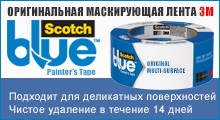| АВТОСТЕКЛА: продажа автостекол, доставка и установка автостекол в Москве |
в мире автостекол
| Email для связи: |
НОВЫЕ ПОСТУПЛЕНИЯ Оригинальный, двухкомпонентный гель SensorTack1 “German Quality” для заполнения линз датчиков дождя/света круглой формы. Розница 
1 100 руб.
СПЕЦ. ПРЕДЛОЖЕНИЕ Cтекло опускное левой задней двери для Seat Ibiza 03 -, Seat Cordoba 4D 03- 
1 200 руб.
А ЗНАЕТЕ ЛИ ВЫ, ЧТО... Проверить на герметичность только что вклеенного стекла можно с помощью ультразвукового детектора ULTRASONIK.
|
Honda Fit 20102010 Honda Fit. Windshield and back glass removal and replacement instructions
 Vehicle type: Four-door hatchback NAGS numbers: Windshield part number FW3013; back glass FB24068 heated . Windshield 2. Drape the fender with a fender cover and tape up any vulnerable areas on the vehicle to protect against possible damage. Tape up the defroster vents to prevent debris from falling into the openings. 3. Remove the rearview mirror by turning it a quarter turn and sliding it down off the pad. 4. Remove the windshield-wiper nut covers. 5. Remove the windshield-wiper nuts using a 14-millimeter wrench or socket. Move the wiper arm in an up-and-down motion to break it loose from the post, or use a wiper puller. Caution: Wipers can sometimes be hard to remove. To avoid stressing the post, use a wiper puller. 6. To remove the two-piece cowl panel, first remove the push-in retainers at the two corners. Then, lift the panel while releasing the four clips on the leading edge. 7. Pry outward on the two corner bumpers attached to the top inner lip of the fender. 8. Pry upward under the cowl panel fascia to release the underside retainers. Remove the cowl panel, sliding it out from under the lower glass edge. Put the panel in a safe place. 9. The remaining molding is a three-sided part that must be replaced with the glass. It will be damaged upon removal. Note: Before beginning windshield removal, verify the new windshield is the correct one and the urethanes and primers are current. Never use outdated products as this could jeopardize the structural integrity of the vehicle and the safety of its passengers. Removal 11. Before cutting out the windshield, remove contaminants from the glass and pinchweld to prevent contact with the urethane. 12. The windshield is surprisingly large for such a small vehicle. Although it should be easy to cut out, you may need a second technician to help set the glass. Use the cutting tool of your choice to remove the glass from the adhesive bead. Note: When using any power tool, lubricate the cutting area with water. Spray the top and sides; then make your cuts. 13. After cutting the sides and top, cut out the bottom portion of the glass. Spray the bottom of the windshield with water at least 4-to-5 inches above the urethane on the glass, so the water flows down into the urethane while you make your final cut across the bottom of the windshield. Caution: Never use your head to push, as this could result in back and neck injuries. 14. Take the windshield out of the opening using a set of vacuum cups. Make sure the vacuum cups do not overlap a crack in the glass. Lift the glass and place it on a windshield stand or suitable workstation. Installation 16. Attach the molding to the glass edge before setting. 17. Dry fit the new glass to the opening. Mark your glass using a grease pencil or molding-retention tape. 18. Place your vacuum cups on the windshield in the appropriate location. 19. Set the windshield onto the old urethane. 20. With the windshield resting in the opening, make sure it is in the right spot. 21. Adjust both sides to the correct setting, marking the passenger’s side, then the driver’s side. Lift the glass and place it on a windshield stand or suitable workstation. 22. Follow the urethane manufacturer’s recommendations for installation. 23. Clean the inside of the windshield using a urethane manufacturer-recommended product. Do not touch the bonding area of the windshield after cleaning, prepping or priming it. 24. Make sure there is no glass cleaner trapped by the molding. Tip the glass vertically while taking care not to touch the bonding area. If moisture drips from the molding, wipe clean and set the glass down on the work surface. 25. Wear powder-free Nitrile gloves to keep off chemicals. 26. Apply the glass prep and primer following the urethane manufacturer’s recommendations. 27. Using the tool of your choice, remove the original urethane bead, leaving 1-2 millimeters of existing urethane on the pinchweld. Make sure there are no contaminants and do not touch the pinchweld after prepping the area. 28. Apply the pinchweld primer only to the areas where needed, and follow the urethane manufacturer’s recommendations. Allow preps and primers to dry as recommended by the urethane manufacturer. 29. Apply a triangular bead of urethane to the same path as the freshly cut urethane on the pinchweld. Before cutting your V-notch, cut the tip off of your nozzle with a nozzle-cutter. With the cut nozzle, measure to the top of the roofline, and at 1/16-inch higher than the roofline, make a mark on the nozzle with a pen or marker. Notch the nozzle up to the marked line; this will give you the appropriate triangular bead. 30. Lift the windshield from the windshield stand or workstation using vacuum cups. Set the windshield on the urethane at the mark you made during your dry fit. Lower the driver’s side of the windshield onto the urethane and line it up with the dry-fit mark; it is now in place. 31. Press firmly to ensure a good seal. 32. Before re-installing the parts, check for leaks. Use a leak detector to go over the perimeter of the windshield. If you find a leak, apply pressure or add more urethane to the spot and ensure that the glass makes contact with the wet urethane. 33. Re-install the removed parts in reverse order. 34. Allow the urethane to cure according to the urethane manufacturer’s recommended cure time before returning the vehicle to the customer. Warning: Disregarding the safe drive-away time that your urethane manufacturer recommends could jeopardize the structural integrity of the vehicle and the safety of its passengers. 35. You have completed the removal and replacement of the windshield. B. Back glass
2. Remove the two grommets from the top of the hatchback frame and remove the 9-mm nuts. The passenger-side grommet just fills the hole, but the driver-side grommet is also a wiring harness. Loosen the wiring-harness grommet and remove the other. 3. Remove the decorative covers on the top of the spoiler using a pocket screwdriver. Remove the nuts underneath. Installation 5. Dry fit the new glass to the opening. Mark your glass using a grease pencil or retention molding tape. 6. Place your vacuum cups on the new back glass in the appropriate location. 7. Set the glass onto the old urethane. 8. With the back glass resting in the opening, make sure it is in the right spot. 9. Adjust both sides to the correct setting, marking the passenger side, then the driver side. Lift the glass and place it on a windshield stand or suitable workstation. 10. Follow the urethane manufacturer’s recommendations for installation. 11. Clean the inside of the back glass using a urethane manufacturer-recommended product. Do not touch the bonding area of the back glass after cleaning, prepping or priming it. 12. Wear powder-free Nitrile gloves to keep off chemicals. 13. Apply the glass prep and primer following the urethane manufacturer’s recommendations. 14. Using a pinchweld scraper, remove as much of the original urethane as the urethane manufacturer recommends. Before removing the old urethane, make sure there are no contaminants and do not touch the pinchweld after prepping the area. 15. Apply the pinchweld primer only to the areas where it is needed. Allow preps and primers to dry as recommended by the urethane manufacturer. 16. Apply a triangular bead of urethane to the same path as the freshly cut urethane on the pinchweld. Before cutting your V-notch, cut the tip off of your nozzle with a nozzle-cutter. With the cut nozzle, measure to the top of the roofline, and at 1/16-inch higher than the roofline and bodyline, make a mark on the nozzle with a pen or marker. Notch the nozzle up to the marked line; this will give you the appropriate triangular bead. 17. Place your vacuum cups on the back glass in the appropriate location. 18. While you hold the glass, have a second technician connect the wiring leads. The connectors cannot be connected once the glass is set. Set the back glass in the opening. 19. The back glass is now ready to be decked. Press firmly to ensure a good seal. 20. Before re-installing the parts, check for leaks. Use a leak detector to go over the perimeter of the glass. If you find a leak, apply more pressure to the spot and ensure that the glass makes contact with the wet urethane. 21. Re-install the removed parts in reverse manner. 22. Check the operation of the back glass by opening and closing it several times. 23. Allow the urethane to cure according to the urethane manufacturer’s recommended cure time before returning the vehicle to the customer. 24. You have completed the removal and replacement of the back glass. |














